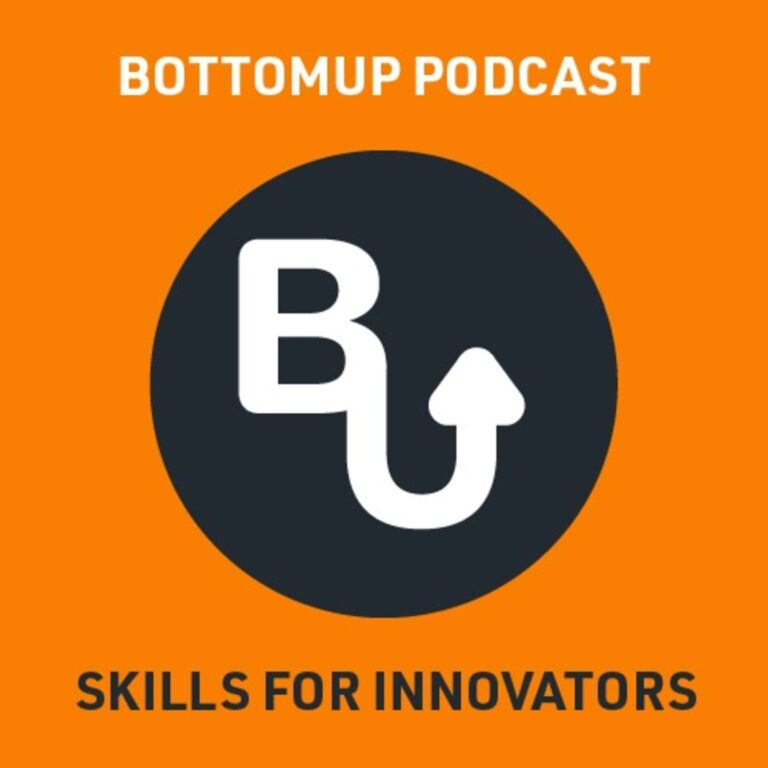Product market fit is a huge milestone in the life of your product. And there’s lots of different ways to make sure you’ve got it. Today we’re going to dig into a couple of ways you can use it.
And to answer that question we need to discuss the three pillars of getting that product market fit. Some of these you may have in fact done when you’ve got your problem solution fit, but the reason I’m bringing them back is it’s really important to double check that you’ve got all of these done in order to say you have product market fit.
For example, I’m working on a product right now and I think we’ve been testing with users, for six months across problem solution fit and product market fit. And we just keep testing. So it’s not like you only do surveys at the start. You can do them right throughout. And it’s really important to always be testing and learning through the journey of building a product.
So there’s three big areas. There’s surveys and interviews, rapid prototyping and then a feature driven minimum viable product. That’s the third and final one, the biggest one in terms of workload. So let’s break all of these down.
So when I’m working with clients, it’s really important for me to feel that I’ve got the job done here, whether you’re working for clients or working for investors, or you’re doing it all yourself for your own new product, these are the essential things you need to do to have product market fit.
Now I’m assuming at the beginning, you’ll have tested out the problem and the solution a little bit with some interviews and surveys. What I would definitely be looking to do in terms of best practices here, just to make sure you’re on track, is to have really good screening questions that really identified the different segments of your users.
Because you will often find that the audience that you perceive as your customer is made up of different parts and the sooner you find out those different parts, the better, because often one of those is the real customer.
The minimum viable product is there for you to double-check to test, learn, to validate. Do you really have something? Are you really solving the problem now? If you get that done, the world is on fire. You are in a great place. A lot of products never get to this stage or they skip it and only find out that they should have done it in retrospect.
If you would like to shed more light on how to test your product market fit. Make sure you have enough surveys, interviews, some rapid prototyping and most importantly of all, make sure you have an MVP.
Join us as we learn about building our product at the BottomUp Skills Podcast for more bite sized product skills and at BottomUp Skills for free courses on Design Thinking, Agile, Lean and much more. Free skill courses for product people and innovators.
TRANSCRIPT
Hello, and welcome to the bottom up skills podcast. I’m Mike Parsons, the CEO of Qualitance.com and we are talking Product market fit. This is a big one in the journey of our product full of challenges. And that’s why it’s featured on our series that we call Unstuck, which is the guide for product managers on how they can tackle the toughest things in the world of product management.
Now, product market fit is a huge step, a huge milestone in the life of your product. There’s lots of different ways to make sure you’ve got it. And today we’re going to dig into a couple of ways you can use it. Um, this is the, the product market fit and all sorts of tools that you can use to kind of unlock it.
And to answer that question. So I want to discuss with you the three pillars of getting that product market fit.
Some of these you may have in fact done when you’ve got your problem solution fit, but the reason I’m bringing them back is it’s really important to double check that you’ve got all of these done in order to say you have product market fit.
3 Big Areas
So there’s three big areas. There’s surveys and interviews. Number one rapid prototyping. Then a feature driven minimum viable product. That’s the third and final one, the biggest one in terms of workload. So I’m just going to break all of these down and share with you some of the things that I look to do always just to feel confident about the product.
So when I’m working with our clients, it’s really important for me to feel that I’ve got the job done here, whether you’re working for clients or working for investors, or you’re doing it all yourself for your own new product, these are the essential things you need to do to have product market fit.
Testing the problem, Testing the solution
Now I’m assuming at the beginning, you will have tested out the problem and the solution with some interviews and surveys. What I would definitely be looking to do in terms of best practices here, is just to make sure you’re on track is to have really good screening questions that identified the different segments of your users.
Because you will often find that the audience that you perceive as your customer is made up of different parts and the sooner you find out those different parts, the better, because often one of those is the real customer, not all of them. So if I were building a new podcasting app, by the way, which I feel that we’re in desperate need of, as podcasting is booming. Let’s say we’re building a brand new product, a podcasting app, and I was doing a survey. I would be looking for my screen and to try and, um, pull apart the different segments. So it’s most likely going to be on a usage.
And if it was my screen, a question would be. What this describes your current podcast usage, and there might be four options here? Then they might say I’m hooked. I’m listening every day. I like podcasts. And you know, I remember when I listen fairly regularly when I remember, um, a third option might be, I’ve listened to a few, but nothing on a regular basis.
And the fourth one might not even know what we’re talking about now, to give you an example of why this is so important for product market fit. It might turn out that the heavy users are not your target market. Maybe it’s in the middle somewhere. Maybe it’s those that like podcasts or those that have listened to a few, you might discover that the reason that they’re not using podcasting more regularly is they find.
They experienced the discovery of new podcasts really hard, and that they actually only have one that they listen to. So if you can solve discovery for the lower usage segment, that might be a bigger market opportunity than the heavy early adopter. That’s why surveys and interviews are really, really important.
Test your problem solution fit
Now, if you want to feel really confident in your problem, solution fit and get some early indications on it, you can actually make a poster or a landing page for your product idea, and test that really early on through the form of a survey. And this is all kinds of research, the quantitative side of research.
The qual side of this is face-to-face interviews where you ask. Lots of questions, but you tend to get more into asking them. Why, why do you want any of us in occasionally? Why do you have any, uh, do this or that? Tell me more. That can be very revealing. Okay. So that’s the quantum qual research to effectively surveys in interviews.
Build your MVP (Minimal Viable Product)
Very good way of confirming that your product as problem solution fit and really gets you on the way to product market fit. Now, before we jumped into MVP, we need to talk about rapid prototyping. This is where you might have a video. A demo of your product, totally non clickable. Um, you might even try like crowdfunding an app.
You might try showing bits and features from your product or the big two are the concierge MVP or the wizard of Oz. These MVPs. Either create the customer experience and it looks like it’s been all done automatically, but actually, it’s all happening manually in the backend. And a classic example of this was zap Zappos.
They created a web shop for shoes and they had no inventory. They would actually only go and buy the shoes once the user placed the order. The reason that this is, um, so good, this sort of concierge to MVP is you don’t have any cost of inventory. You’re not making any money, but that doesn’t really matter because what happened in the case of Zappos.
Rapid Prototyping scenario
So many people ordered that. They said, Hey, we better get some inventory. Because there’s really high demand here. So that’s rapid prototyping. Now the biggest one I want to get into here is MVP. And I call it feature-driven MVP because sometimes, you know, these, um, fake or manual or the wizard or the concierge MVP, they’re kind of closer to rapid prototyping in my book.
I think a feature driven MVP is defined by you’re writing code or someone’s writing code, even if it’s like a no-code or low-code app. But this really closes the discussion on product market fit. Now, in this case, you want your core user to be able to complete a task on the app. It could be with InVision, but most likely it’s going to be with code.
It’s gotta be good enough in a rough form. It’s going to be good enough to satisfy the user when trying to do the task. Now, if you have a feature driven MVP that does that, then you can put on all the bells and whistles and go. To market with a fully built product. But the whole point here is you’re trying to actually do as little of the product as possible.
This part can give you so much more because you might find that in the real world. You just are not able to help users get the task done. So don’t go building a startup like Eric Reese did 40 million bucks, five years, and nobody needed a product.
Testing your MVP
This is the whole point. The minimum viable product is there for you to double-check to test, learn, to validate. Do you really have something? Are you really solving the problem now? If you get that done, the world is on fire. You are in a great place. A lot of products never get to this stage or they skip it and only find out that they should have done it in retrospect.
So I hope I’ve shown a bit of light on how to test your product market fit. Make sure you have enough surveys, interviews, some rapid prototyping. Most importantly of all, make sure you have an MVP. All right that’s it for our little dive into the world of product market fit.
If you want to know more about it, head on over to BottomUp Skills, lots of free courses. Jump in there, sign up, and we’d love to hear your feedback and how that helps you build a better product. Okay that’s the recipe of the BottomUp Skills Podcast.




